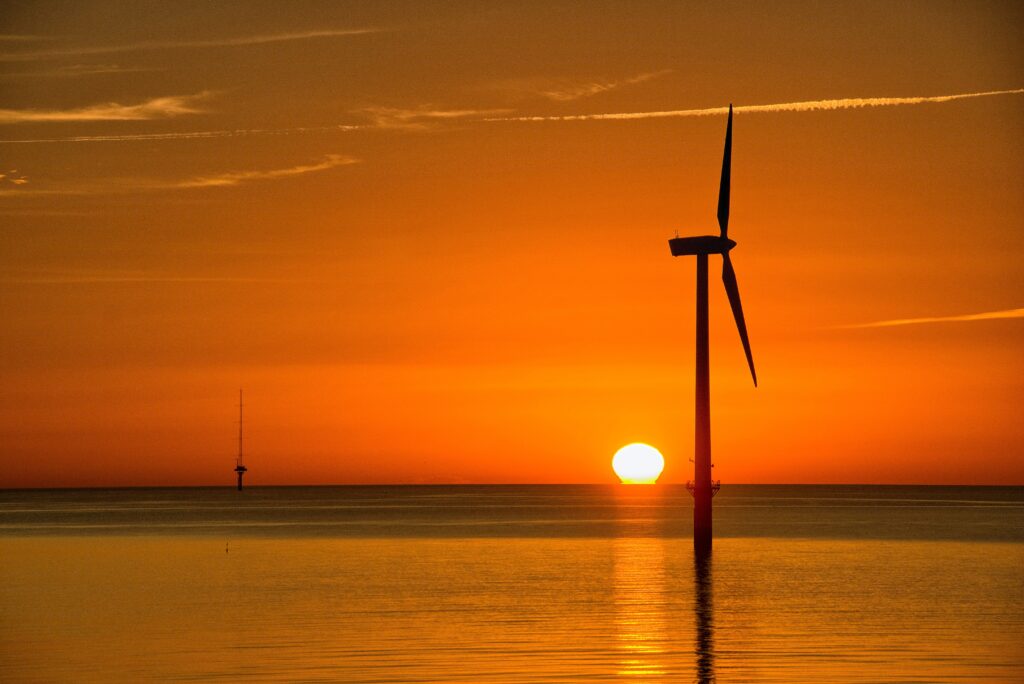Small Island States Drive Green Recovery from COVID-19

Small island states, especially those in the Pacific, play a crucial role in advocating for a sustainable recovery from COVID-19, writes Athaulla A Rasheed.
Despite the impact of the COVID-19 pandemic, the existential threat of climate change to Small Island Developing States (SIDS) remains. This prompted SIDS to participate in climate meetings to promote a green COVID-19 stimulus agenda to ensure climate action remains at the forefront of international policy making.
Historically, international climate action has often been challenged by the interests and preferences of larger actors despite what has been prescribed in climate conventions. However, for decades SIDS collectively influenced international decisions, notably through the Alliance of Small Island States (AOSIS).
In November 1989, 14 representatives of SIDS gathered at the Conference of Small States on Sea Level Rise in Male, the capital of the Maldives, to discuss their common climate concerns. The outcome of the Malé conference led to the creation of AOSIS, a group that has seen extraordinary success in pursuing the common voice of SIDS in the United Nations (UN) negotiations leading up to the Framework Convention of United Nations on Climate Change (UNFCCC) 1994.
Through this ad hoc coalition, small island states have highlighted their unique vulnerabilities and the need for international collective action to tackle climate change.
In the early 1990s, after persistent collective action, the UNFCCC incorporated the key objectives of AOSIS around the recognition of the unique vulnerabilities of SIDS, the need for international cooperation and the organization of international meetings, including the Conference of the Parties (COP), to ensure the continuity of the climate negotiations.
AOSIS continued to push for climate action in subsequent COPs, including the Kyoto negotiations in 1997, Copenhagen in 2009 and Paris in 2015.
Despite the reservations of larger actors in the Kyoto process, AOSIS has been able to generate momentum for collective action to respond to the particular circumstances facing SIDS.
In Copenhagen, there were intense differences between the United States and the large developing states of the G77 group and China, particularly around emission reduction targets and state responsibilities. Although the results of this meeting did not satisfy everyone equally, AOSIS saw it as a platform to establish a compensatory discourse on the vulnerability of SIDS to climate change.
In Paris, AOSIS presented the collective interests of SIDS on setting 1.5 degrees Celsius as an emissions reduction target. Although the Paris Agreement did not set 1.5 degrees Celsius as a formal emission reduction target, the mere mention of it in the Agreement was nonetheless seen as a success. AOSIS’s engagement in the climate negotiations helped to have the concerns of SIDS recognized in the COP process during this period. AOSIS members are keen to maintain this momentum and diplomatic success in driving their climate agenda during COVID-19 and beyond.
As the pandemic progressed, AOSIS members continued their international advocacy to focus on climate action while linking it more closely to planning for the COVID-19 recovery.
AOSIS convened the Placencia Ambition Forum in April 2020 to maintain SIDS climate dialogue through COVID-19. The meeting brought together progressive climate negotiators including UN Secretary-General António Guterres, high-level climate champions Gonzalo Muñoz from Chile and Nigel Topping from UK, Director of Health and Climate Diarmid Campbell-Lendrum of the World Health Organization, the next COP 26 President Alok Sharma of the United Kingdom, as well as representatives of civil society.
The main goal of AOSIS was to reach agreement among negotiators on strengthening climate action as governments embark on COVID-19 stimulus and relaunch programs. The President of AOSIS said that the health and climate crises have exposed “our collective vulnerabilities to systemic shocks”, and that international cooperation is needed to address the double crisis.
The forum also highlighted the important role that Pacific SIDS continue to play in promoting climate action. Pacific states have used collective diplomacy since the 1970s through the South Pacific Forum – later renamed the Pacific Islands Forum – to defend and advance their interests. In line with views expressed by the wider AOSIS membership, Pacific Island Countries argue that COVID-19 has created an opportunity to build a “bluer Pacific”.
Representing 12 Pacific SIDS at the Placencia Ambition Forum, Ambassador Satyendra Prasad of Fiji argued that COVID-19 has had a significant impact on their ability to address development and climate challenges, and that it is necessary to deploy broader efforts at the international level to address a climate-based COVID-19 recovery.
The idea of “green recovery” is evident not only in the political advocacy of SIDS. At the Placencia Ambition Forum, UN Secretary-General Guterres urged the international community to “[commit] now to rebuild better after the pandemic, [so] we can use the recovery from the effects of COVID-19 to ensure a more sustainable and resilient future ”.
These ideas have had a significant impact and are present in COVID-19 stimulus packages around the world. Examples are Japan’s “Platform for the 2020 Redesign”, aimed at supporting a sustainable and resilient recovery from COVID-19, and Germany’s recovery plan, which includes a “Package for the Future” of 45 billion US dollars to support measures for a “green” transition. Others include Nigeria’s COVID-19 stimulus package, which includes spending US $ 619 million on solar house projects, and South Korea’s ‘New Deal’, which aims to generate US $ 48 billion. US dollars in “green” funding, or 16% of the total stimulus.
With such efforts underway, it has not been difficult for AOSIS members to further encourage debate on green responses to the dual crisis at COP meetings. Speaking at the forum, Sharma also recognized the need for a clear focus on climate action. He urged forum participants to support collective action on “a green and resilient environment [COVID-19] recovery ”based on“ a credible and ambitious NDC (Nationally Determined Contribution) ”within the framework of the Paris Agreement. Several speakers further stressed that monitoring of all parties’ NDCs, which are the national climate reduction targets set by each COP signatory, is crucial for serious action on climate change.
The ensuing Petersberg Climate Dialogue, co-hosted by Germany and the UK, ran alongside the Placencia Ambition Forum in April 2020. It focused on ‘the design [COVID-19] stimulus programs that will facilitate a more committed climate policy in the future ”.
More than 30 climate ministers and high-level climate negotiators during the dialogue recognized the success of the AOSIS forum in driving the climate discourse, despite challenges facing COVID-19 recovery efforts . The dialogue focused in particular on strengthened contributions determined at the national level, in the words of the Chilean Minister of the Environment, Carolina Schmidt, as “plans for the design of recovery strategies”.
Studies have shown that the challenges caused by the dual crisis of COVID-19 and climate change can be tackled by updating the NDCs in the context of the recovery, ultimately leading to international collective action on both in the same direction.
IIt is important to note that the momentum for a sustainable and inclusive recovery from COVID-19 initiated by AOSIS has been established among the major emitters. At their November 2020 summit, G20 leaders declared their support for an ecologically sustainable economic recovery.
Before the pandemic struck, AOSIS had influenced international collective action on climate action. Amid the pandemic, AOSIS members succeeded in influencing international thinking on a green recovery from COVID-19, particularly towards creating a common political discourse for the upcoming COP 26 this year.
This article is based on an article published by the ANU Department of Pacific Affairs (DPA) as part of its “At a Glance” series. The original paper can be found here.


.jpg)

